Matter in Our Surroundings Class 9 Notes, Video Explanation, Question Answer
Matter in Our Surroundings CBSE Class 9 Science Chapter 1 – Complete explanation and Notes of the chapter ‘Matter in Our Surroundings’.
Topics covered in the lesson are Matter and its classification, Physical and chemical classification, Molecular theory of matter, Molecular structures and properties of solids, liquids and gases, Plasma and BEC state, Temperature and temperature scales, Interconversion of states of matter, Evaporation.
Given here is the complete explanation of the chapter, along with all important questions and NCERT solutions to book questions have also been provided for the ease of students.
Class 9 Science
Chapter 1 – Matter in our Surroundings
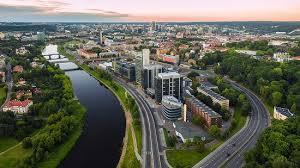
- See Video Explanation of Chapter 1 – Matter in our Surroundings
- Matter and its classification
- Temperature and temperature scales
- Physical and chemical classification
- Interconversion of states of matter
- Molecular theory of matter
- Evaporation
- Molecular structures and properties of solids, liquids and gases
- NCERT book solutions
- Plasma and BEC state
Matter in Our Surroundings Introduction
Let us know about the meaning of the title of this chapter “matter in our surroundings”. So to know about it we need to understand the term ‘surrounding’ first.
Do you know what is meant by the word ‘surrounding’?
Surrounding can be anything that is around us like air, clouds, buildings, water bodies, etc. These all are surroundings.
Do you know that all the things that surround us are matter?
Anything around us that has some mass and occupies certain space when we keep it, is called matter. In this chapter, we will be studying matter, its properties and much more.
Video Explanation of Chapter 1 Matter in Our Surroundings
Matter and its classification
Matter can be anything that occupies Space and has some Mass, (mass may be small or more doesn’t matter).
Like we have LPG cylinder. Although it is filled with air only, but still it is too heavy. So, that is also matter as it has mass and occupies space. Even air is matter. If you see around, you will find that everything surrounding you is matter.
Classification of matter
- Earlier when Matter was classified, then the ancient scientists said that matter was made up of five basic Elements called: Air, Fire, Earth, and Water & Sky. These five components are called as “panchtatva”.
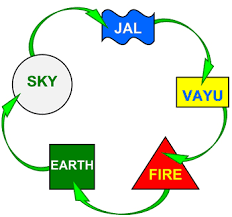
- But with the advancement in the field of science, it was concluded that matter can be classified on the basis of two main properties that is physical and chemical and therefore there are two main categories of matter, as follows –
Classification of Matter
- Chemical Classification
- Physical Classification
Physical Classification
It is done on the basis of Physical Properties, i.e. the properties that we can see like rigidity, colour etc.
Chemical Classification
Is done on the basis of Chemical Composition of Matter that means what kind of particles are present, how they react with other, if they do not react then why so.
Let’s do some activities to study about Matter. These activities are conducted in order to know more about matter and learn about their properties.
Activity: Do you know how we come to know that matter is made up of small particles?
Let’s perform an activity: for this we need the following things-
- beaker,
- common salt, spoon
- glass rod
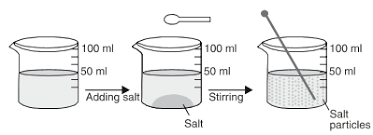
- Fill beaker 3/4th with water mark the level of water on beaker, then add common salt to water.
- On adding, we see that when we add salt to water it settles down.
- On stirring, it starts disappearing and then a stage comes when it disappears completely.
Let s see what does this observation proves
- As we are not able to see salt particles, this shows that it is not one continuous state of matter, instead it is formed of small particles.
- Actually, on stirring, the salt particles get dissolved in water but still the level of water remains same. This shows that there are spaces between the particles of water which are occupied by the small salt particles.
Another activity: If we consider about the motion of particles. Do you actually think that they can show movement? If yes, lets track their movement?
In order to perform the activity, the following things are required –
- Stand,
- Agarbatti
Match box

- Now let’s take one stick out of packet, hold it on stand, place it in a corner of the room and light it. We will see that its fragrance gets spread evenly in the room.
- The fragrance can be felt in whole room. It is not confined to one corner. So the observation is that “The whole room starts smelling very good“
The Conclusion to an activity
- Is that particles of matter are not stationary. They are moving continuously and when they drift through air, we can smell the pleasant fragrance.
- The reason behind it is that when we light the stick, the heat energy supplied is taken by the particles, which increases their kinetic energy and this makes the fragrant particles to move rapidly. They easily drift through the air and spread fragrance.
You will be surprised to know the actual phenomenon involved behind this activity- The Phenomenon is called Diffusion.
Diffusion
It is the movement of any substance from a place of higher concentration to a place of lower concentration, or It can also be defined as the intermixing of different substances.
Activity to show diffusion: let’s take two flasks connected to each other by a knob.
Now let’s say on one side there is gas A and on the other side, there is gas B. When knob is closed, both the gases are in their own flasks. But when the knob is opened the two gases intermix rapidl y. As a result, both the flasks will have A and B gas particles. This intermixing is called diffusion.
It is best shown by gases as the gas particles have maximum kinetic energy.
Activity to prove: particles of matter attract each other
Let’s take different substances like
- an iron nail
- piece of wood
- rubber band
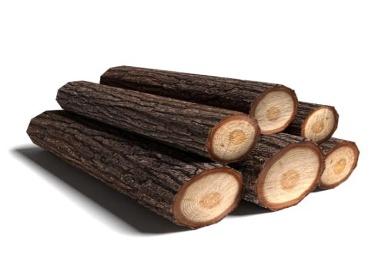

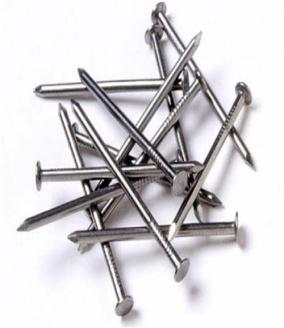
- Now try to break them by using hammer.
- As we know, all three belong to same states – solids.
- Can you guess what we noticed?
- We noticed that it is easier to hammer down rubber band as compared to wood and iron nail.
- The reason is that the particles in iron nail are so closely packed that it is difficult to separate those using hammer in comparison to wood or rubber band.
Conclusion of this activity:
In iron, the force of attraction between particles is maximum as particles are closer whereas in others they are not so close.
All these activities lead to the formulation of more information about matter and its properties which lead to the introduction of the Theory of Molecular Structure of Matter.
Theory of molecular structure of matter
According to this theory,

- Matter is made up of small particles called molecules.
- They are in a state of continuous motion. Due to this, we can say that they possess K.E.
- K.E. Increases with ↑ se in temperature.
- K.E. Is maximum in gases and least in solids.
- The space between molecules is called intermolecular space which is found to be least in solids and maximum in gases.
- There is a force that exists between particles of matter and is called intermolecular force
- Intermolecular force ↓ ses with increase in Intermolecular space
Terminology involved
Before we start with more properties of matter let us know some terms which will be used in this chapter.
- Matter: Anything that occupies space is matter.
- Material: The term is used to describe a particular kind of matter.
Materials are of two Types:
- Homogenous
- Heterogeneous
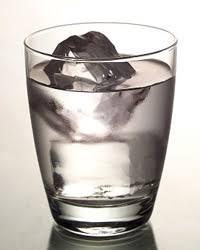
Homogeneous Materials: Are those that have the same composition and same properties throughout the sample.
For example, if you take water in a glass and add salt to it and stir it. It will result in formation of a mixture that has same properties and uniform composition (that is no distinct layers are seen). They mix thoroughly. If you take sample from any part of that mixture, it will show similar properties.
Heterogeneous Materials: are those that have different composition and different properties in different parts of the sample.
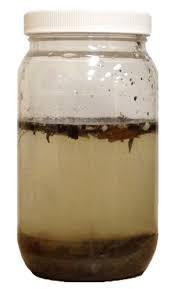
For example, if we take sand in water, then we will see that inspite of stirring, it does not dissolve in water. It will settle at the bottom of the container and few particles will be seen floating in the water. If you take a sample from any part of it, it will show different properties.
- Molecule: Is a term used for particular type of matter that has independent existence in nature like oxygen molecule, carbon dioxide molecule, water molecule, etc.
Molecular structures and properties of solids, liquids and gases
Now let us do Physical Classification of Matter: this classification is done on the basis of physical properties of matter, that is the properties that can be seen or felt by touching, looking etc.
According to it, matter is divided into 3 types:
- Solids
- Liquids
- Gases
Solids
if you take any solid let’s say we consider wood, what properties can you find in it by looking at it.

- First property that we can make out is: That it has fixed shape and volume: we realize this because when wood is kept on the floor or any surface, it occupies definite space.
- Another property that we notice is: It is not compressible: if we it try to squeeze it or change its shape, we cannot do so. This is probably due to the reason that there is no space between solid particles and in order to compress it, there should be space between particles. This is because when we apply force, the particles fill those empty spaces and come closer.
- Another property: They don’t need container to hold them: we don’t have to put an almirah or any other solid in a container. it can be kept as such on the surface.
- They do not flow: This is because when wood is kept at a place, it remains at the same place. It doesn’t flow or move on its own.
- Their diffusion tendency is nil: it is seen that wood doesn’t move from one side of room to another side of room on its own as the particles do not have that much energy that they keep on moving.
Let us try to understand solids on the basis of theory of molecular structure:
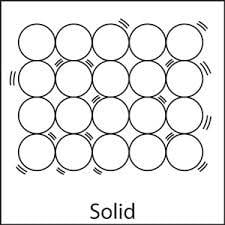
Explanation of Solids on the basis of Molecular Structure
- If we see any solid we observe that in solids, particles are tightly packed. They are very closely packed due to which there is hardly any space between particles or we can say that intermolecular spaces are very less and when particles are closer, that means the intermolecular forces of attraction are stronger. As a result, solids have fixed shape, volume and can’t be compressed.
Now do you understand that why wood or any other solid doesn’t flow or compress or diffuse and why they possess high density.
Liquids
Let’s consider any liquid such as water and try to make out the difference between particles of wood and water. We observe –

- It has neither fixed shape nor volume
- It can be compressed more than an almirah
- It can flow in all directions
- It can fill the entire space of a container
- It can easily diffuse that is more than solids
- It has lesser density than solids
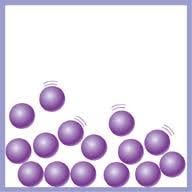
Explanation of Molecular Structure of Liquids
In liquids, the particles are not so closer to each other as in solids due to which the intermolecular space is comparatively more, which results in lesser attraction between the particles.
So, intermolecular force is comparatively less as compared to solids.
Gases
Let’s sum up the properties of gases in comparison to solids and liquids
- They have neither fixed shape nor fixed volume
- They are highly compressible
- They can flow, diffuse to great extent
- They have very very low density
- They can fill the entire space
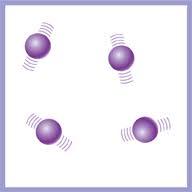
Explanation of gases on the basis of molecular structure
In gases the particles are very far apart. Due to this, they have high kinetic energy and keep on moving randomly. As a result, the intermolecular spaces are very large and intermolecular forces are almost nil.
Plasma and Bose Einstein condensate state
Two states of matter are plasma and BEC, let’s understand them:
Plasma: It consists of ionized gas, such that its particles are super energetic and super excited. In devices such as tube lights and CFL, the gases get ionized on the passage of current and glow with the color depending upon the nature of the gas. For Example: Neon gas emits red glow, argon emits green – yellow, etc.
Bose Einstein Condensate State:
It is the fifth state of matter and it is obtained on super cooling the gas at almost absolute Kelvin zero temperature.
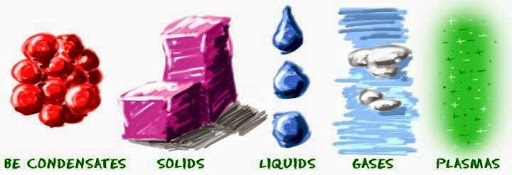
Class 9 Science Chapter wise Explanation
| Chapter 1 Matter in Our Surroundings | ||
Temperature and temperature scales
You often fall sick, sometimes due to high fever. Then the first step that has to be taken is to measure temperature by using thermometer which records the temperature of the body in a given scale.
Temperature is the degree of hotness or coldness of body or We can also say that temperature measures the extent of motion of atoms.
It is measured with the help of thermometer.
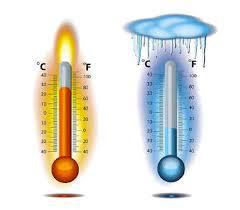
There are different scales on which temperature can be recorded:
Commonly used scales are Celsius and Kelvin
Celsius Scale:
- It is written as oC
- On it the lower fixed point (at which ice melts) is O oC
- The upper fixed point on it (at which water boils) is 100 oC
Kelvin Scale:
- The lower fixed point is- 273K
- The upper fixed point is 373 K
- Kelvin scale is called as absolute zero scale of temperature because on it the lowest possible temperature is zero.
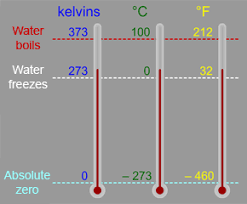
Relation between K & oC : these scales are interconvertable by using the well defined relations like
0 oC = 273 K
So, K = oC + 273 or oC = K -273
For example, if we need to convert 25 oC to K then, we need to add 273 to it and it comes out to be 298K.
Interconversion of States of Matter
You must have noticed that if we keep ice out in kitchen, with time it gets converted into water or when water is heating and you forget to turn the gas knob off, then it keeps boiling and a stage is reached when the vessel gets empty and no water is seen inside. This is due to interconversion of states of matter.
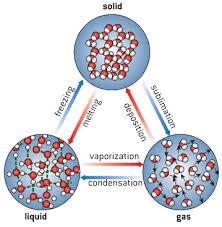
The phenomenon due to which matter changes from one state to another and then back to its original state on altering the conditions of temperature and pressure is called interconversion of states of matter.
The state of the substance can also be changed by heating or by applying pressure.
As you all have LPG cylinders at home or must have seen CNG cylinders installed in cars, these cylinders contain Liquefied Petroleum Gas or Compressed Natural Gas which means that in these cylinders the gases are liquefied by applying pressure.
So, keep in mind that on applying pressure the gas can change into liquid.
Similarly, on applying pressure, liquid changes into solid.
For example, when pressure is applied on Carbon Dioxide gas, it forms dry ice (Solid state).
So, interconversion tells us about the change of one state of matter in to another state.
Solid ↔ liquid ↔ gas
- The conversion of solid to liquid is called melting and it occurs at fixed temperature called melting point
- The conversion of liquid to gas is called evaporation and it occurs at fixed temperature called as boiling point
- The conversion of gas to liquid is called condensation or liquefaction and it occurs at liquefaction point
- The conversion of liquid to solid is called freezing and it occurs at temperature called freezing point.
- The conversion of solid 🡪 liquid 🡪gas involves absorption of heat energy
- And the conversion of gas 🡪liquid 🡪 solid involves release of heat energy
The energy which is required to change the state whether released or absorbed is called latent heat
Latent heat
It is the amount of heat released or absorbed during change of state of a substance.
Solid liquid
Like when we convert Solid to Liquid, heat is supplied and that heat is called latent heat of fusion that is –
Latent Heat of Fusion: it is the amount of heat required to convert one unit mass of substance from solid to liquid state at its melting point.
Example: for ice it is equal to 3.34 x 105 3/Kg
Change of state of solid to liquid on the basis of molecular structure
When we heat any solid substance, the particles gain energy and start vibrating with greater amplitude. Their kinetic energy increases due to which their intermolecular space increases and intermolecular force decreases and it gets converted into liquid state.
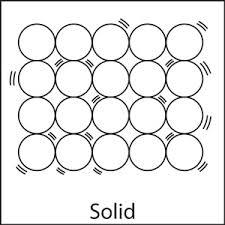
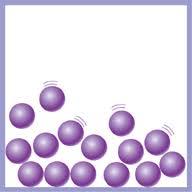
Liquid state gaseous state
Boiling or Vaporization: it is the change of liquid state of a substance to gaseous state at boiling point.
Boiling Pt. => Is the temperature at which liquid changes to gaseous state on heating.
Boiling point of water => 100 oC
Latent heat of Vaporization: it is the amount of heat required to convert one unit mass of substance from liquid to vapour at its boiling point.
For example, for H2O it is equal to 22.6 x 105 J/kg.
Change of state of liquid state to gaseous state on the basis of molecular structure
When we heat any liquid substance, the particles gain energy. As a result, their kinetic energy increases and they starts vibrating with greater amplitude due to which their intermolecular space increases and intermolecular force decreases and they get converted into gaseous state.
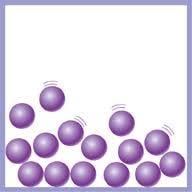
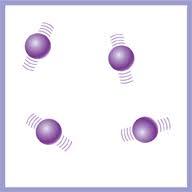
Gas Liquid
Condensation: It is the change of gaseous state to liquid state on cooling. This occurs at a temperature below the boiling point of substance.
Change of state of gaseous state to liquid state on the basis of molecular structure
It is done by applying pressure and reducing temperature
Explanation: When high pressure is applied on gas, distance between particles decreases & particles start attracting each other & gas gets converted in to liquid state.
Solid gas
You must have noticed that the naphthalene balls are used to prevent growth of insects in boxes of beds. With time, these balls disappear. Do you know what is the phenomenon behind this disappearance?
Sublimation: It is the change of solid state directly to gaseous state on heating & vapours back to solid on cooling.
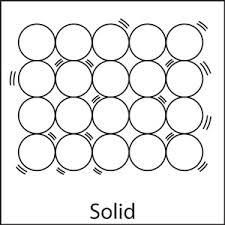
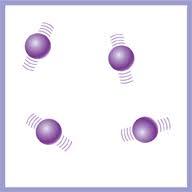
It involves two terms, that is
- Sublime: A gaseous state that is formed due to sublimation of solid
- Sublimate: It is the solid that sublimes
Example of Sublimation: Sublimation of Naphthalene Balls
Evaporation
You must have seen that when wet clothes are spread under sun, they dry up or the wheat grains are often dried under the Sun before sending to mill for converting to flour. This is due to the phenomenon of evaporation that is taking place.
Evaporation is the process of change of liquid into vapor at temperature below its boiling point.
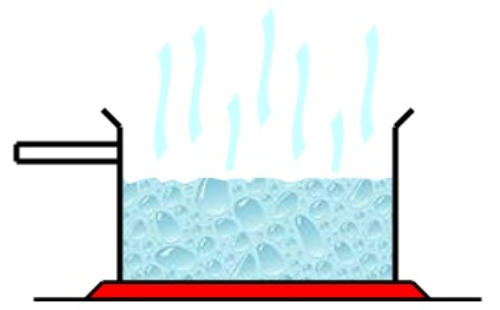
Explanation of Evaporation on the basis of Molecular Structure
During evaporation, the liquid particles are heated or they take the heat energy from the surroundings. When heat is taken by particles, the energy of particles increases due to which they start moving rapidly.
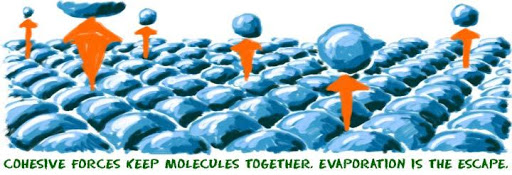
As a result, they collide with one another. In the course of collisions, some particles loose energy and some gain energy. As a result, particles with higher energy overcome their force of attraction and escape into the atmosphere.
Factors on which Evaporation Depends:
- Surface area
- Temperature
- Humidity
- Wind speed
Lets explain the dependence of the phenomenon on these given factors:
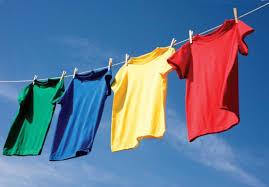
1. Surface Area – More is the exposed surface area of any substance more liquid droplets will change to vapor state
For xample: Drying of Wet Clothes
We have seen that clothes dry faster when they are spread on a line. The reason is that when we spread them, the surface area gets increased, therefore, evaporation gets increased as more and more molecules are exposed.
2. Temperature: Increase in temperature, increases the Kinetic Energy of molecules. They break their force of attraction, hence, escape or evaporate readily.

For example: Formation of Water vapor on cup of Hot Tea.It is because as temperature rises, the particles start moving randomly, therefore, evaporation rate is increased. Therefore, when they escape, they also collide with the cup and get condensed.

3. Humidity: More is Humidity less in the Evaporation
For example- Clothes dry with difficulty on a humid day: because as humidity is more, that is more vapour in the atmosphere.
Due to which the escaping tendency of vapours decreases so as the rate of evaporation decreases.
4. Wind Speed: With increase in speed of wind, evaporation increases.
That is the reason why clothes dry faster if there is a windy day. As the speed of wind is high, the liquid particles take up the energy. As a result, their kinetic energy increases and they escape more readily and more easily.
|
|
Evaporation Cause Cooling Effect
Evaporation is a surface phenomenon. The particles at the surface having high K.E. break up their force of attraction & form vapours. Since the energy is lost, that means temperature gets lowered and low temperature means cooling effect so, evaporation results in cooling effect.

Q. Do you know why we feel more comfortable if we wear cotton clothes in summers?
A. It is because the cotton clothes are very good absorbers of Water. They rapidly absorb sweat and then evaporate taking large amount of heat from our body thereby, giving a cool sensation.
Matter in our surrounding class 9 Extra questions
Q1: Which of the following is matter: chair, table, smell, hate, almonds, thought, cold, cold drink, smell of perfume?
Answer: Chair, Almonds, Air, Cold Drink are examples of matter.
Q2: Give reasons why smell of hot sizzling food reaches you several meters away, but to get smell from cold food you have to go close?
Answer: The smell of hot food reaches us because the rate of diffusion of gases increases with increase in temperature.
Q3: A diver is able to cut through water in a swimming pool, which property of matter does this observation show?
Answer: he is able to cut through water as force of attraction in water molecules is small.
Q4: Tabulate the differences between the characteristics of matter
Comment on the rigidity, compressibility, fluidity, shape, kinetic energy and density.
Answer:
(a)
| feature |
solid |
liquid |
gas |
|
very small |
small |
very large |
|
2. attractive forces |
very large |
small |
nil |
|
3. compressibility |
nil |
low |
high |
|
4. rigidity |
high |
low |
not rigid |
|
5. density |
high |
low |
very low |
|
6. kinetic energy |
small |
large as compared to small |
very high |
(b)
- Rigidity: It is the property by virtue of which a substance can retain its shape when a force is applied on it. Solids are rigid.
- Compressibility: It is the property by virtue of which the volume of substance can be decreased by applying force or pressure. Gases are highly compressible.
- Fluidity: It is the property by which molecules of one substance can flow from one point to another. Liquids and gases both can flow.
- Shape: It is definite geometrical arrangement of particles of substance. Solids have definite shape
- Kinetic Energy: It is the energy possessed by particle by virtue of its motion. Gaseous particles possess highest kinetic energy.
- Density: It is mass per unit volume of a substance. Solids have extremely high density.
Q5: Give reasons for the following –
a. “A gas fills completely the vessel in which it is kept “
Answer: It is because the attractive forces between gas particles are very less and molecules move randomly with high energy
b. “A gas exerts pressure on the walls of container “
Because the kinetic energy of gas particles are very high so pressure is due to the hitting of molecules with walls of container.
c. “A wooden table is solid “
Because attractive forces are high and spaces are almost nil between particles
d. “We can easily move our hand in air but not through solid block “
Because there are intermolecular spaces in air but not in solid block
Q6: Liquids generally have lower density as compared to solids but why ice floats on water?
Answer: Ice floats on water because ice has lower density than liquid water because for given mass of ice, volume is more as compared to that of liquid water.
Q7: Convert 300K and 573 k in to Celsius?
Answer: 300K-273=27degree Celsius
573K -273 = 300 degree Celsius
Q8: What is the physical state of water at 25degree Celsius and 100 degree Celsius?
Answer: At 25 degree Celsius it is liquid and at 100 degree Celsius it is gas.
Q9: For any substance why the temperature does remains constant during the change of state?
Answer: This is because the heat energy supplied or released is used up in increasing or decreasing the spaces and intermolecular force.
Q10: Suggest a method to liquefy atmospheric gases?
Answer: by cooling under pressure
Matter in our surroundings NCERT Book Solutions
Q1. Why does a desert cooler cool better on a hot dry day?
A. This is because on a hot dry day due to increase in temperature and lesser humidity, the rate of evaporation increases.
Q2. How does the water kept in an earthen pot (matka) become cool during summer?
A. This is because the water comes out from pores of matkas and gets evaporated and we know evaporation results in cooling effect.
Q3. Why does our palm feel cold when we put some acetone or petrol or perfume on it?
A. This is because the particles of acetone take energy from our body and get evaporated and evaporation causes cooling.
Q4. Why are we able to sip hot tea or milk faster from a saucer rather than a cup?
A. We are able to sip hot tea or milk faster from a saucer rather than a cup because saucer provides more surface area than cup for evaporation of liquid into vapor and it causes cooling effect.
Q5. What type of clothes should we wear in summer?
A. We should wear cotton clothes in summer as they rapidly absorb sweat and then evaporate it taking away large amount of heat from our body thereby giving a cool sensation.
Q6. Convert the following temperatures to the celsius scale.
(a) 293 K (b) 470 K.
A. (a) 293K = 293 – 273 = 20⁰C
(b) 470K = 470 – 293 = 177⁰C
Q7. Convert the following temperatures to the kelvin scale.
(a) 25°C (b) 373°C.
A. (a) 25 degree Celsius = 25+273=298K
(b) 373 degree Celsius =373+273=646K
Q8. Give reason for the following observations.
(a) Naphthalene balls disappear with time without leaving any solid.
(b) We can get the smell of perfume sitting several metres away.
A. (a) Naphthalene balls disappear with time without leaving any solid because naphthalene ball shows sublimation.
(b) We can get the smell of perfume sitting several metres away. This is because gases have higher rate of diffusion.
Q9. Arrange the following substances in increasing order of forces of attraction between the particles— water, sugar, oxygen.
A. In increasing order of forces of attraction between the particles, they can be arranged as follows –
- oxygen
- water
- sugar
Q10. What is the physical state of water at—
(a) 25°C (b) 0°C (c) 100°C ?
A. The physical state of water is as follows –
- 25° C – water
- 0° C – ice
- 100° C – gas
Q11. Give two reasons to justify—
(a) water at room temperature is a liquid.
(b) an iron almirah is a solid at room temperature.
A. (a) water is liquid at room temperature because the attractive forces between molecules of water are small and can move from one point to another.
(b) An almirah is solid at room temperature because molecules are tightly held by strong forces.
Q12. Why is ice at 273 K more effective in cooling than water at the same temperature?
A. Ice at 273 K is more effective in cooling than water at the same temperature because in ice the molecules have lower energy as compared to particles in the liquid water at same temperature. Hence, they require more latent heat of fusion for melting .
Q13. What produces more severe burns, boiling water or steam?
A. Steam produces more burns because in steam the molecules have higher kinetic energy than in boiling water.
Q14. Name A,B,C,D,E and F in the following diagram showing change in its state

A.
- A- fusion
- B- vaporization
- C-condensation
- D-solidification
- E-sublimation
- F-sublimation
| Class 9th English Lessons | Class 9th English Mcq | Take Class 9 MCQs |
| Class 9th Hindi Lessons | Class 9th Hindi Mcq | Take Class 9 MCQs |
| Class 9th Science Lessons |